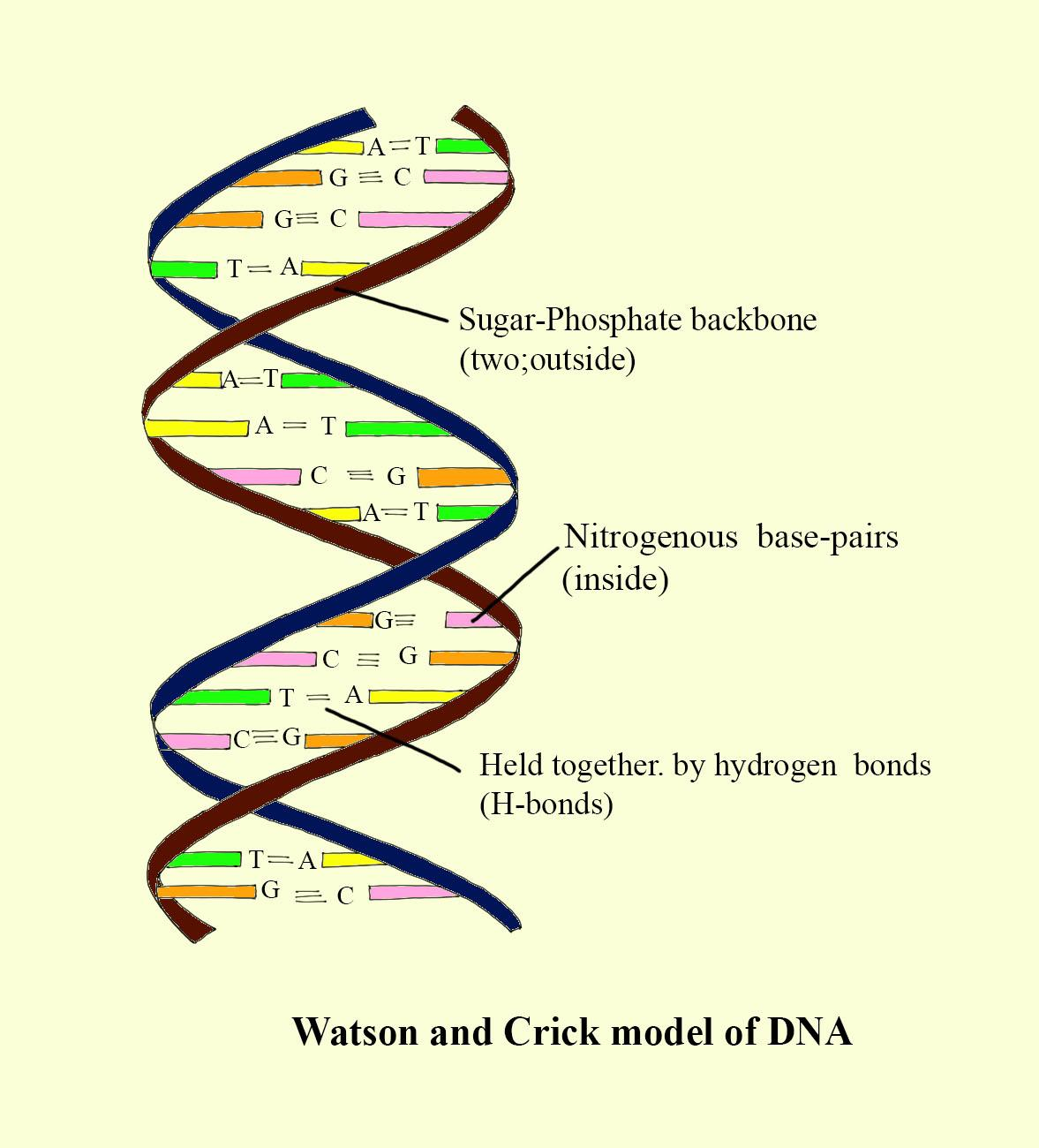
In the Watson and Crick model of DNA, the ladder are composed of
(a) Sugar
(b) a purine and pyrimidine
(c) two purines
(d) a sugar and phosphate molecule
Answer
462.9k+ views
Hint: The Polynucleotide chain of DNA has a regular helix. Every DNA molecule contains two polymer strands coiling around one another. The sides of the ladder are formed by alternating sugar (deoxyribose) and phosphate molecules while the steps of the ladder are formed by a pair of nitrogen bases.
Complete answer:
On the basis of the Watson and Crick model of DNA, the "steps" of the ladder are made out of purine and pyrimidine and the “backbone” consists of sugar and a phosphate molecule. This model is known as a double helix because of two long strands of DNA twisting around one another like a twisted ladder.
Additional Information:
Based on this model, the DNA molecule comprises two strands that are associated together by hydrogen bonds and helically twisted.
Each step on one strand comprises a nucleotide of purine base which substitutes with that of pyrimidine base. Accordingly, a strand of DNA molecule is a polymer of four nucleotides i.e. A, G, T, C. The two strands join together and produce a double helix. Bases of two nucleotides form hydrogen bonds i.e. A joins with T by two hydrogen bonds (A = T) and G joins with C by three hydrogen bonds (G = C).
So the correct answer is ‘a purine and pyrimidine’.
Note: The hydrogen bonds between the two strands are such that they maintain a distance of 20 ${ A }^{ o }$. The double helix coils in the right-hand direction i.e. clockwise direction and finishes a turn at each 34 ${ A }^{ o }$ distance. A major groove, the turning of the double helix brings about the appearance of a deep and wide groove. The major groove is the site of the binding of a specific protein.

Complete answer:
On the basis of the Watson and Crick model of DNA, the "steps" of the ladder are made out of purine and pyrimidine and the “backbone” consists of sugar and a phosphate molecule. This model is known as a double helix because of two long strands of DNA twisting around one another like a twisted ladder.
Additional Information:
Based on this model, the DNA molecule comprises two strands that are associated together by hydrogen bonds and helically twisted.
Each step on one strand comprises a nucleotide of purine base which substitutes with that of pyrimidine base. Accordingly, a strand of DNA molecule is a polymer of four nucleotides i.e. A, G, T, C. The two strands join together and produce a double helix. Bases of two nucleotides form hydrogen bonds i.e. A joins with T by two hydrogen bonds (A = T) and G joins with C by three hydrogen bonds (G = C).
So the correct answer is ‘a purine and pyrimidine’.
Note: The hydrogen bonds between the two strands are such that they maintain a distance of 20 ${ A }^{ o }$. The double helix coils in the right-hand direction i.e. clockwise direction and finishes a turn at each 34 ${ A }^{ o }$ distance. A major groove, the turning of the double helix brings about the appearance of a deep and wide groove. The major groove is the site of the binding of a specific protein.

Recently Updated Pages
Class 12 Question and Answer - Your Ultimate Solutions Guide

Master Class 12 Social Science: Engaging Questions & Answers for Success

Master Class 12 Physics: Engaging Questions & Answers for Success

Master Class 12 Maths: Engaging Questions & Answers for Success

Master Class 12 English: Engaging Questions & Answers for Success

Master Class 12 Chemistry: Engaging Questions & Answers for Success

Trending doubts
Which are the Top 10 Largest Countries of the World?

Differentiate between homogeneous and heterogeneous class 12 chemistry CBSE

Draw a labelled sketch of the human eye class 12 physics CBSE

What is a transformer Explain the principle construction class 12 physics CBSE

How much time does it take to bleed after eating p class 12 biology CBSE

What are the major means of transport Explain each class 12 social science CBSE




